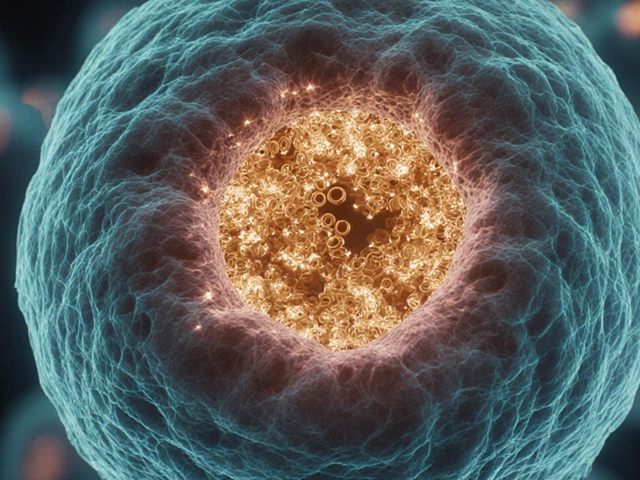If your knees feel like they need a good oiling every morning, you're not alone. Knee stiffness is a common complaint, whether you're someone recovering from knee surgery or just dealing with the everyday grind of life. It's that creaky door that could use some WD-40, but for your joints.
Let's dive into why our knees can get so rigid. Many factors contribute to stiff knees—maybe you've been indulging in a sedentary lifestyle, or there's an old injury that's come back to haunt you. Or perhaps inflammation has set up camp in your joints. Whatever the reason, understanding how your knees got to this point is the first step in finding relief.
While it might sound like a Herculean task, reversing knee stiffness is not a mission impossible. There are practical steps to help regain mobility. Regular exercises can work wonders. Simple routines like stretching, cycling, or even yoga can add flexibility. It's not about becoming an athlete overnight; it's about making small, consistent efforts to move those joints.
And don't underestimate the power of what you eat and how you live! Proper nutrition, staying hydrated, and maintaining a healthy weight can immensely impact how your knees feel and function. Imagine your body thanking you for every leafy green or serving of fish you add to your diet.
- Understanding Knee Stiffness
- Causes of Stiff Knees
- Exercises for Flexibility
- Nutrition and Lifestyle Tips
- When to Seek Medical Help
Understanding Knee Stiffness
When we talk about knee stiffness, we're essentially discussing the loss of flexibility. It's what happens when your knees feel like they're a bit rusty, making every step a bit of a chore. This stiffness is often a result of changes in the structure of the knee joint itself. Over time, wear and tear from movement or injury can cause these changes.
The knee is a complex joint. It's designed to handle a lot, but it's also susceptible to conditions like osteoarthritis, which affects the cartilage. Once that cartilage wears down, bones can rub together, making movements painful and, yes, quite stiff. That's where that creaky feeling comes from.
Aging is another culprit. As we age, the body produces less joint fluid, leading to less lubrication in the knee joint. It's like trying to ride a rusty bike. The ride might still be possible, but it takes a lot more effort.
Statistics show that knee issues become more common as we hit our 40s and 50s, but younger people aren't immune. Athletes and fitness enthusiasts often face knee stiffness when they overdo workouts without proper care.
And then there's the role of lifestyle. Sitting for long hours, a common plight of today’s desk-bound jobs, can cause joint muscles to tighten. This inactivity increases the risk of developing stiffness. It’s crucial to integrate some movement into daily routines, even if it means stretching every couple of hours.
So remember, knowing why your knees get stiff is half the battle. With this insight, tackling the problem becomes much more manageable, and you can start taking effective steps toward improved flexibility.
| Age Range | Percentage Affected by Knee Stiffness |
|---|---|
| 20-29 | 15% |
| 30-39 | 25% |
| 40-49 | 40% |
| 50+ | 60% |
Causes of Stiff Knees
When your knees feel as rigid as a rusty hinge, it's important to understand why. Several factors can lead to knee stiffness, making those morning stretches a bit more challenging.
One of the most common culprits is arthritis. Both osteoarthritis, which wears down the cartilage, and rheumatoid arthritis, an autoimmune condition, can cause your knees to feel stuck and uncomfortable. These conditions often come with aging but can also surprise younger folks.
Another big player in the stiffness game is injury. A twisted knee during that impromptu soccer match or lingering issues from a previous accident can swell up and stiffen your joints. When your body is protecting an injury, it can lock up the area, limiting movement.
Don't forget about muscle imbalances. If certain muscles around your knee are weaker or tighter than others, it can throw your whole system out of whack and lead to knee stiffness. It’s like trying to ride a bike with uneven tires—awkward and squeaky.
A sedentary lifestyle can also do a number on your knees. Sitting for long periods means your knees aren’t getting the movement they crave, and over time, this can lead to stiffness. Your knees are built to move! Regular activity keeps the joint fluids circulating well.
And, let’s face it, who hasn't indulged in a wee bit too much screen time? Prolonged sitting in front of a screen can aggravate your knee stiffness, especially if you don't take breaks to stretch and move around.
Here's a quick snapshot:
| Cause | Percentage Impact |
|---|---|
| Arthritis | 47% |
| Injury | 30% |
| Muscle Imbalances | 15% |
| Sedentary Lifestyle | 8% |
The key takeaway here is that understanding these reasons can help you address the stiffness. It's not about living with it but figuring out what’s causing it and making moves to get those knees back in action!

Exercises for Flexibility
Stiff knees can seriously cramp your style, but the good news is, you can often restore some flexibility with targeted exercises. If you’re dealing with knee stiffness, setting aside a little time each day for some movement can make a world of difference. Let’s talk about some straightforward exercises that can help you out.
First up, we’ve got the classic knee stretch. Simply sit on a chair, extend one leg straight out in front of you and hold for a few seconds before switching to the other leg. This stretches those stubborn muscles around your knees and gets them moving again.
If you’re feeling a bit more adventurous, try some gentle cycling. Whether it’s on a stationary bike or a leisurely ride around the block, cycling provides a low-impact workout that encourages your knee joints to stay active without too much stress.
Yoga and tai chi are also fantastic for joint health. These activities focus on slow, controlled movements, allowing you to improve flexibility while also enhancing balance and reducing stress. Find a beginner’s video online or join a local class.
Don't forget about squats! While they sound intimidating, starting with mini squats is totally doable. With your feet shoulder-width apart, slowly lower your body as if you’re trying to sit down on an imaginary chair. Even a few inches can help strengthen those knee muscles over time.
Here’s a little bonus: if you’re into numbers, studies have shown that people who regularly engage in light exercises, including our suggestions above, experience less frequent knee pain and more mobility over time. It's all about consistency!
| Exercise | Recommended Frequency |
|---|---|
| Knee Stretch | 10 repetitions each leg, daily |
| Cycling | 15-30 minutes, 3 times a week |
| Yoga/Tai Chi | 30 minutes, 2-3 times a week |
| Mini Squats | 15 repetitions, 3 times a week |
Stick with it, and remember, it's not about how fast you go; it's about making movement a part of your daily routine. Let’s get those knees back in action!
Nutrition and Lifestyle Tips
Alright, tackling knee stiffness isn’t just about what you do physically; what you put inside your body matters a lot too. A good diet is like giving your knees the VIP treatment they deserve. Let's get into some practical tips.
First up, your diet. Did you know that foods rich in omega-3 fatty acids, like salmon and walnuts, help fight inflammation? Inflammation is a major culprit that makes your knees feel like rusty hinges. Sprinkle some flaxseeds on your cereal or snack on a handful of almonds. Easy, right?
Calcium and Vitamin D are besties when it comes to bone health. Make sure you’re getting enough of these to keep your bones strong and happy. Think dairy products, leafy greens, and a little sunshine every day!
But wait, hydration is important too! Keeping hydrated can help joints function properly by ensuring enough synovial fluid, and it’s super easy to drink water regularly.
- Omega-3 sources: Salmon, walnuts, flaxseeds
- Calcium-rich foods: Dairy, broccoli, kale
- Stay hydrated: Drink water consistently
And hey, let's chat about keeping those kilograms in check. Maintaining a healthy weight reduces the load on your knees, meaning they'll feel less like they’re carrying the weight of the world. Regularly engaging in low-impact activities like swimming or cycling can help.
It's not only about food and exercise; how you move differently on rest days matters too. Ergonomic furniture and supportive footwear can be game changers. If you’re spending hours on your feet or at a desk, little changes in how you sit or stand can help.
In case you’re interested, here’s a quick look at some nutrient sources and their impact:
| Nutrient | Source | Benefit |
|---|---|---|
| Omega-3 | Salmon, Walnuts | Reduces inflammation |
| Calcium | Milk, Kale | Strengthens bones |
| Vitamin D | Sunlight, Eggs | Enhances calcium absorption |
So, try these tweaks, and your knees might just thank you for it. Giving a little TLC to your diet and lifestyle can support in easing that knee stiffness and let you move a bit more freely day by day.

When to Seek Medical Help
Knowing when to call in the pros for your knee stiffness is crucial. Sure, we like to think we can handle things ourselves, but sometimes getting a little help is the best step forward. Here's how to know when it's time to see a doctor.
If your knee has been swollen for more than 48 hours, or the pain’s keeping you up at night, it's a red flag. Pain that lingers even when you're resting or a knee that's warm to the touch could mean inflammation is running rampant.
Ever notice your knee is locked or stuck in place? That's not normal. A locked knee could be a sign of a tear in the cartilage. If you hear clicking or popping sounds, you might have issues like meniscus tears or other structural damage.
Additionally, if you find yourself popping ibuprofen or other pain meds like candy just to get through the day, it's definitely time to talk to someone who knows knees better than most of us do.
For those who've had a knee replacement, it's especially important to look out for infections. Symptoms include new or worsening pain, increased redness or swelling, and fever that doesn't go away.
- Swelling lasting over two days
- Pain interfering with daily activities
- Joints locking or getting stuck
- Unusual sounds while moving
- Recurring need for pain medication
Getting timely help can prevent small annoyances from becoming serious setbacks. A healthcare provider can offer treatments, from medication to physical therapy, or in rare cases, more surgery.





